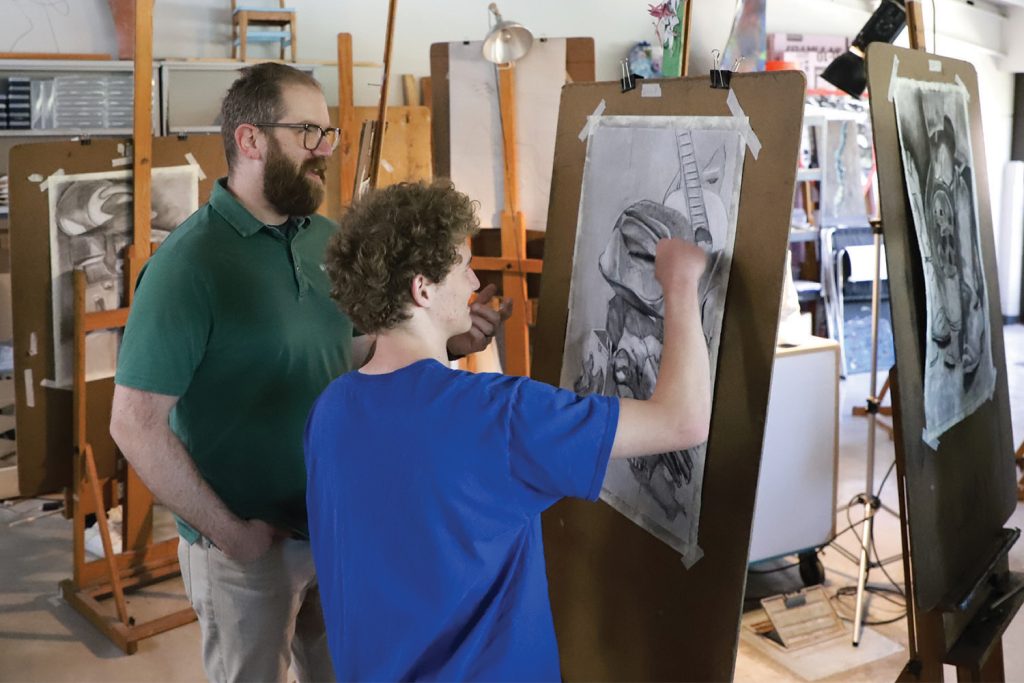While often relegated to the realm of electives, the fine arts are an important part of education. Visual art helps students develop important skills related to communication, creative thinking and social development. T&S spoke with Jim Daniels, a visual arts faculty member at Whitfield School, to learn more about how the independent school helps students engage with their creative side.
“The arts are a supremely important aspect of a well-rounded education,” Daniels notes. “It helps students develop the tools to solve problems using creativity. When you combine logic and creative thinking you kind of become unstoppable.” At Whitfield, students in grades six through 9 are required to take either a visual or performing arts course. In their sophomore year, art becomes an elective, but more than 65% of students continue to pursue at least one facet of the arts, according to Daniels. For the visual arts, the school offers subjects like photography, graphic design and ceramics along with drawing and painting.
“In the fine arts department, we balance the traditional with the more conceptual and experimental,” Daniels notes. “It’s not about having students do landscapes and still lifes all year. We push them to be creative thinkers and problem solvers through different projects. Currently, we are getting ready to study batik, a form of Indonesian art that uses wax and dye on fabric.” He always enjoys seeing what students create. Some standout out annual projects include student-designed playing cards and a department-wide printmaking initiative. “Every fine arts student creates prints using hand-carved blocks, which we display,” he says. “It’s a massive project, but it’s always a lot of fun.”
The arts aren’t only present at Whitfield through dedicated classes. Daniels says they have a place throughout the school’s curriculum in every subject, and students often come to the fine arts faculty for assistance with projects for other classes. “For English, students may have to create a movie pitch for a book, and it will require visual as well as written communication,” he explains. “We’ll work with the students to generate ideas and offer feedback. Whitfield uses project-based learning to help students engage with their education, and the arts are a part of that. It’s woven into every subject. We never have to ask how we can integrate art into a lesson. It’s something that happens organically.”
For Daniels, Whitfield’s commitment to the fine arts sets the school apart. He had originally planned on teaching at the post-secondary level, but after visiting, he was drawn to Whitfield. Now, he’s been there for 12 years. “I saw how important the arts are across the curriculum and how the school is dedicated to using differentiated instruction to help each student,” he says. “I see my role as a teacher being like a coach. It’s important that I get to know students and understand where they are coming from. Knowing their strengths and challenges, I can help them convey the message they want through their art.”
Pictured at top: Whitfield fine arts faculty member Jim Daniels shares feedback with Lucas Babusis (’24).
Photo courtesy of Whitfield School
